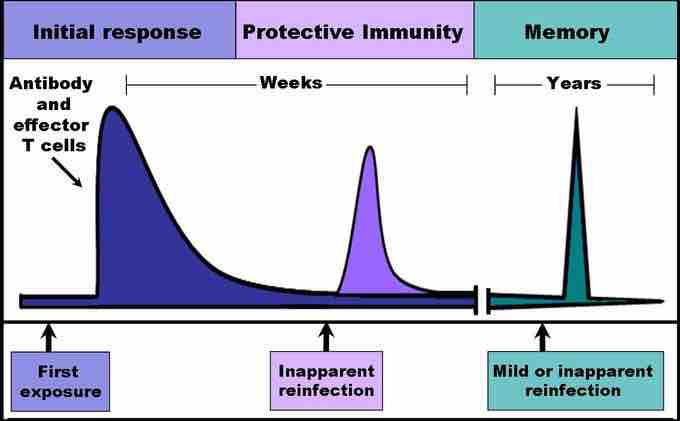Serology is the scientific study of blood serum and other bodily fluids. In practical immunological terms, serology is the diagnostic identification of antibodies in the serum. Serological tests are performed on blood serum, and body fluids such as semen and saliva. In practice, the term usually refers to the diagnostic identification of antibodies in the serum or the detection of antigens of infectious agents in serum. Such antibodies are typically formed in response to an infection (against a given microorganism), against other foreign proteins (in response, for example, to a mismatched blood transfusion), or to one's own proteins (in instances of autoimmune disease).
A primary immune response occurs when a B cell sees an antigen for the first time. Antigen binding to the surface of the B cell stimulates the production of antibodies that are capable of binding directly to the antigen. Because this first recognition process takes time for antibody development, there is an initial delay for the body to fight the invading antigens. Immunoglobulin M (IgM) is an antibody produced during the primary immune response and plays a significant role fighting infection. When an antigen is introduced into the body for the first time, large quantities of IgM are produced. Meanwhile, the B cells are producing highly specific Immunoglobulin G (IgG) more slowly. Once IgG is produced in quantity, the IgG plays a greater role in the removal of antigens from the body due to its ability to bind to the antigen molecules more tightly. Through the course of an infection, a rapid spike of circulating IgM can be seen in the bloodstream. This is followed by a decrease of IgM as the amount of IgG increases. Medical laboratory personnel can identify the course and duration of an infection by measuring the ratio of IgM to IgG in the bloodstream. A ratio high in IgM indicates that an infection is in its early stages, while a ratio high in IgG indicates that the infection is in its later stage .

Immune response
When B and T cells begin to replicate, some of the offspring that they produce will end up becoming long-lived memory cells. These memory cells will remember all specific pathogens encountered during the animal's lifetime and can thus call forth a strong response if the pathogen ever invades the body again.